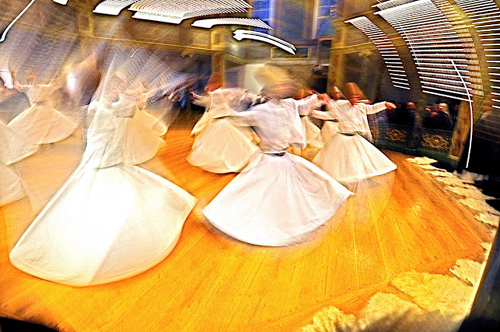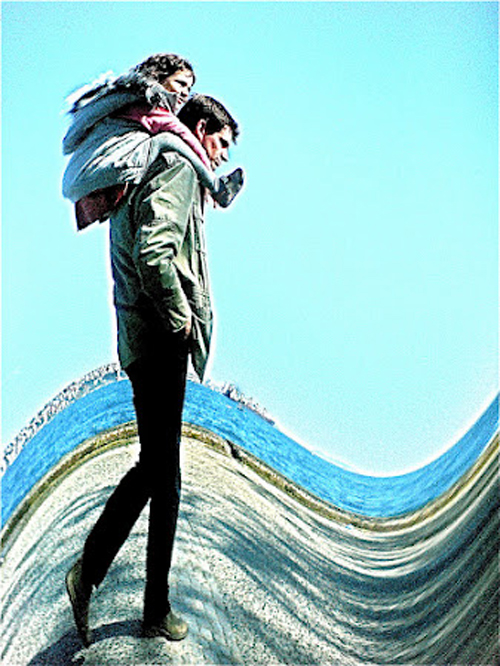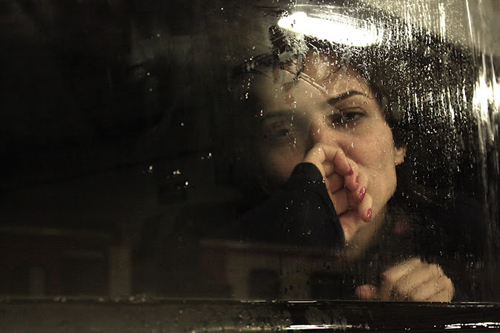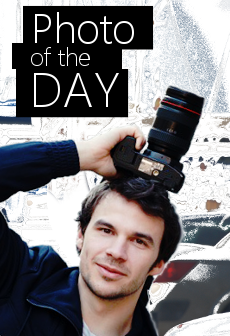An Interview with Photographer Jean-Marc Arakelian by Petia Hinkova
Edited by: Lauren Sophie Kearney

Jean-Marc Arakelian: I`m trying to catch the movement

Photo: Jean-Marc Arakelian
You say that in your photos you are trying to catch the movement. Can you explain that to us?
To me aestheticism is movement, movement is harmony, and harmony is a part of beauty. The art of photography or of any kind of art is to bring out the movement from the static.
The earth is in movement but from our point of view we feel it is static, so movement is what we have to achieve in photo or in art. In everything there is hidden movement that should be seen. To make the invisible visible is the goal for an artist.

Photo: Jean-Marc Arakelian
Which out of all the countries you have visited has remained in your heart?
India, Japan, and Iran are special to me, so special that it has changed and transformed my emotions. However the Philippines and Israël have a private place in my heart and Lebanon, a fundamental part. But India, Japan and Iran will remain particularly special.

Photo: Jean-Marc Arakelian
Why have you settled in Turkey? What is so special about it, compared to all the other countries you have visited?
Personal circumstances made me come to Istanbul. I can’t believe I have stayed as long as three years; this is the longest I have stayed in a country. I have stayed because I have started to experiment on making pictures with my simple mobile Sony Ericsson K810i.
One day I was going home, it was dark and I found myself in a nice location. I didn’t have my camera and so with my mobile phone I took a picture and when I saw the result, I began shooting at night with that mobile phone. I saw that I was discovering a unique style; I have done, like, Eighty thousand pictures just with my mobile phone in three countries: India, Iran and mostly Turkey and I got my first photo exhibition in Istanbul last June at the main art gallery.
I have also come to know the Dervish Sufi world and I have started photographing it. So I have stayed mainly to take pictures of unexpected events, but I had to stay for three years due to personal circumstances. Turkey is not as special to me as Japan, Iran and India.

Photo: Jean-Marc Arakelian
When do you feel that a photograph is ready? What criteria do you follow?
Emotion is the sentiment that guides me to know about the possibility of a specific picture. Emotion is the maturation of our five senses, and the quality of our emotion depends on what we have done to make it mature.
Going on a pilgrimage as a quest is a way to do that, also being in countries like India, Japan and Iran have certainly created a specific emotion within me. That’s why my emotions are based on very specific lighting, movement and setting.

Photo: Jean-Marc Arakelian
What is the Dervish Sema ceremony like, to which your last project was devoted? What is most valuable of this ceremony?
The Dervish Sema ceremony is a prayer accompanied by very specific sufi music that engages your body to dance in such a way that you are in meditation with God. It has been brought out by Mevlana, also known as Rumi who was undoubtedly the most important mystical leader in Sufism during the 13th century in Iran and in Turkey.
Also what I intend to do in photography with dervish sema dance is to reveal spiritual movement from the dance, as in something out of sight. For this I use two techniques. The first technique is to photograph in direct shooting; the second type of spiritual movement is created my mixing dervish dance with other pictures which have nothing to do with dervish, but have a relation. Then the added pictures have the purpose to give an emotion or an atmosphere to the dervish sema dance itself.

Photo: Jean-Marc Arakelian
Do you adapt easily to the different cultures? How do you adapt? In India, you have most likely, your artistic experience started from when you saw the picture from the 16th century. If you hadn’t of came across this experience, how would you have proceeded?
The best way to adapt is to get involved in the culture you want to discover. There are many ways, such as studying, offering some of your professional knowledge, or devoting yourself to social work. I have done all of these.
India has certainly been the country where I have accomplished everything at the same time; India was a mystery to me because I never wanted to go to India. However, an aesthetic experience changed my mind – a small painting done in India in 1580 during the Mogul dynasty.

Photo: Jean-Marc Arakelian
The painting represents an angel holding a fish. That specific character is the Archangel Raphael – also known as Tobias angel’s – because it refers to a story mentioned in the Bible called the Book of Tobias. As that story was a guideline for my pilgrimage, the artistic experience guided me to India; I wanted to discover the country that had that painting.
I have gone far in India, and because of this I shall write a book about what has happened after I have reached my goal. I also wrote an article about that painting in which we can read through the creative aspect that there is a specific way into the Silk Route, starting from Nineveh in Iraq to Fatipur Sikri in India, bypassing Ecbatana and Tehran in Iran. I would like to make a movie about it.

Photo: Jean-Marc Arakelian
What price does a photographer pay, striving to catch the movement?
Patience, hard work and experience are the most important things for a photographer to find his own style. We have to know when we are at the right place, at the right time with the appropriate camera. However, if you don’t have a good one use what you have, as I have done to capture a special image at night with just my simple mobile phone. And always try to do things differently from others.

Photo: Jean-Marc Arakelian
Have you learnt anything about yourself during your pilgrimage trip around the world?
I shall write a book in regards to my travelling because it will show that anything can be possible in a quest if we are able to detach ourselves from materialistic things. However, as I have reached the target I aimed for, the same thing that happened in the story of Tobias which happened 2200 years back, has happened to me; I can say that I was able to listen and look at the events around me.
I have learned that aestheticism has guided my path and quest in a profound way. The first one when I have discover for the first time that painting done in India which the character was the one of the story I wanted to follow, at that time I was in Jerusalem.

Photo: Jean-Marc Arakelian
So that painting showing an angel holding make to go in India… The second example was the picture I took with my mobile phone at night in Istanbul, showing a woman on stairs and a man looking at her. This wasn’t the situation but I made it that way. So photography made me stay in Istanbul for three years, three years where I have captured unexpected photos.
In another way during my trip, I have been involved in social work with people who have suffered deeply, and I have been involved with blind people trying to create a program where they would be able to understand their inner sight and use it.

Photo: Jean-Marc Arakelian
I have gone to many countries for that purpose; Malaysian Philipines, Singapor, India, Tajikistan, Colombia and Canada. I have used my own money, made my own surveys and created a program that I wanted to establish in Iran in 2007. I could have succeeded but it did not work out.
I believed in it so much, but I had no regrets because I was passionate about the inner sight of the blind. I have learnt that the life of others can be a way to help us make our emotions more mature; the danger is to aspire by the life of others and become totally blinded by what we have to do.
What life asks us is not to hide our weaknesses in life of another person but to build our own identity, to make our emotions more mature through the life of people we meet or through the events we come across.

Photo: Jean-Marc Arakelian
What have you learnt about people in general? Are they the same all over the world or do they differ?
I did not learn about people, I have learned about myself through people and through the circumstances I have come across. The world has no difference in terms of suffering, violence, injustice, or beauty and the more you go in remote area, more you are with yourself more you have a chance to cross a behavior, to cross someone that can transform something in you.

Photo: Jean-Marc Arakelian
Another thing I have learned about is faces; I have become more and more aware of faces and bodies. All these encounters finally made me choose my path in life, which is in the field of photography and movies, which was the field I wanted to avoid. Also with photography I have been able to bring out the hidden beauty of some women, and this was something that touched me a lot, to be able to show the beauty of someone who doesn’t expect to have any.

Photo: Jean-Marc Arakelian
What are your hopes and dreams for the future?
I would like to have more aesthetical experiences, as it will guide me towards a spiritual experience that I will express through the world of pictures in photography or by making movies. Actually I have done work on dervish in Istanbul; I’ll soon be doing an exhibition in Belgium and in India too, I hope…
I made discoveries through the Indian painting showing an angel holding a fish; I have written articles especially to speak of this.

Photo: Jean-Marc Arakelian











5 comments so far ↓
Nobody has commented yet. Be the first!
Comment